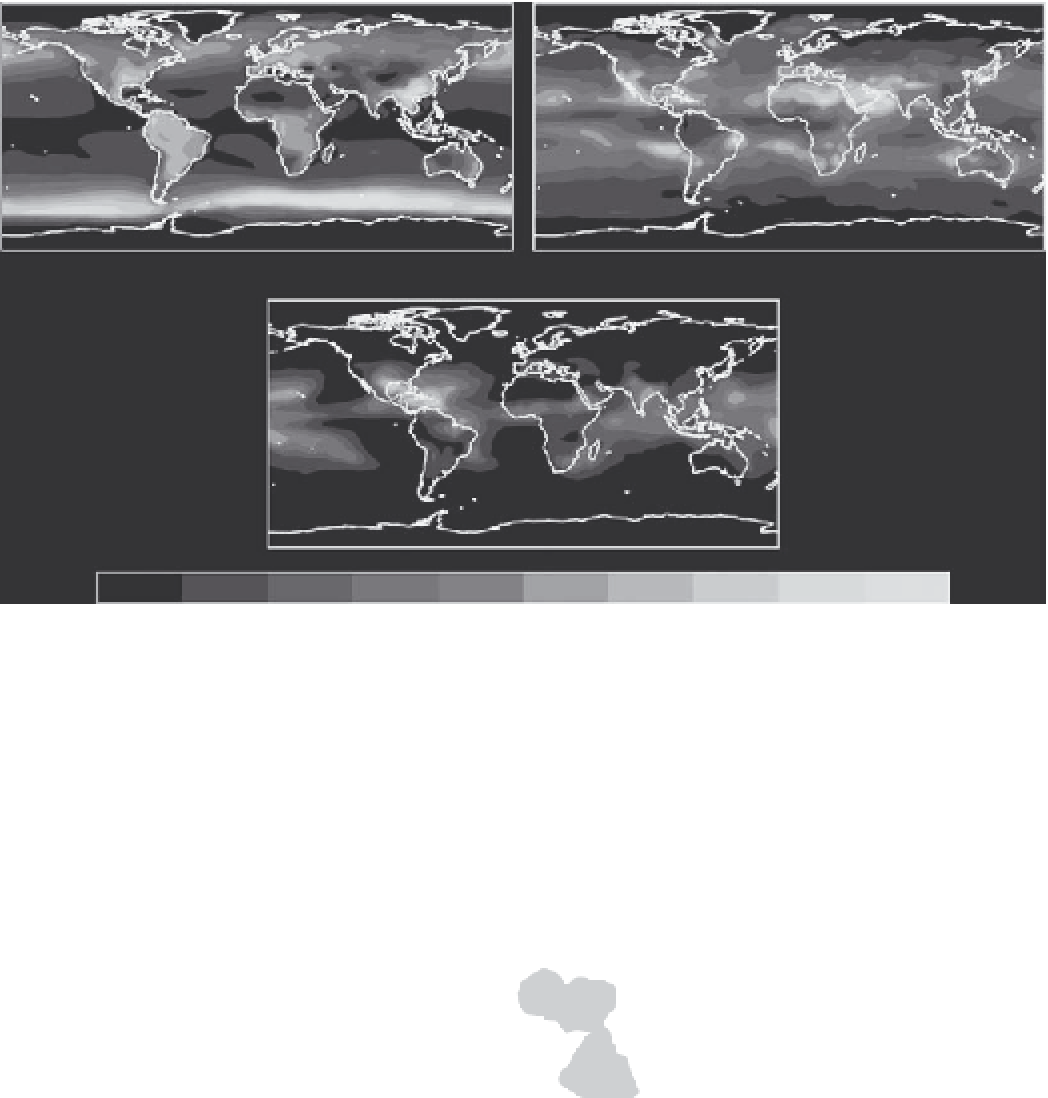Environmental Engineering Reference
In-Depth Information
to the atmosphere is perhaps marginally higher in the open
ocean than in coastal and estuarine waters, but it is not
clear whether this is due to higher rates of mercury reduc-
tion or lower rates of its oxidation in the open ocean rela-
tive to coastal environments. Current mass balance models
suggest that this gaseous exchange of Hg(0) represents the
largest sink or loss of mercury from the oceans, with the
next most important loss term being deposition and burial
in sediments, often following the scavenging of mercury
by particles in the water column that then sink to depth
(Lamborg et al., 2002; Mason and Sheu, 2002; Sunderland
and Mason, 2007; Žagar et al., 2007).
Hg(0) constitutes over 90% of the total atmospheric mer-
cury pool, and the average residence time of Hg(0) in the
troposphere has been estimated to be on the time scale
of 3-24 months (Bergan and Rodhe, 2001; Radke et al.,
2007; Selin et al., 2007, 2008). Atmospheric Hg(0) can be
deposited directly to the oceans, with gross dry deposition
thought to be greatest in areas where temperatures are low
and wind speeds high, such as the Southern Ocean (Selin
et al., 2008). However, atmospheric deposition of mer-
cury commonly involves Hg(II) following the oxidation of
Hg(0). Hg(0) can be oxidized to Hg(II) in the atmosphere by
ozone and numerous radical species, including hydroxyl,
A Hg(0) dry deposition (µg m
-
2
a
-
1
)
B Hg(II) dry deposition (µg m
-
2
a
-
1
)
C Hg(II) wet deposition (µg m
-
2
a
-
1
)
0
1
2
3
4
5
6
7
8
9
10
FIGURE 10.5
Estimated annual mean mercury deposition fl uxes under preindustrial conditions. (a) Hg(0) dry deposition. (b) Hg(II) dry
deposition. (c) Hg(II) wet deposition. All fl uxes reported as µg m
−2
yr
−1
. (
Source:
Adapted/reprinted from Selin et al., 2008, with permission
from the American Geophysical Union.)
2 3 4 6 8 10 12 14
FIGURE 10.6
Increase in the atmospheric deposition of mercury in the present-day relative to preindustrial times expressed as an enrichment factor
(i.e., a value of 4 denotes a fourfold increase). (
Source:
Reprinted from Selin et al., 2008, with permission from the American Geophysical Union.)










































